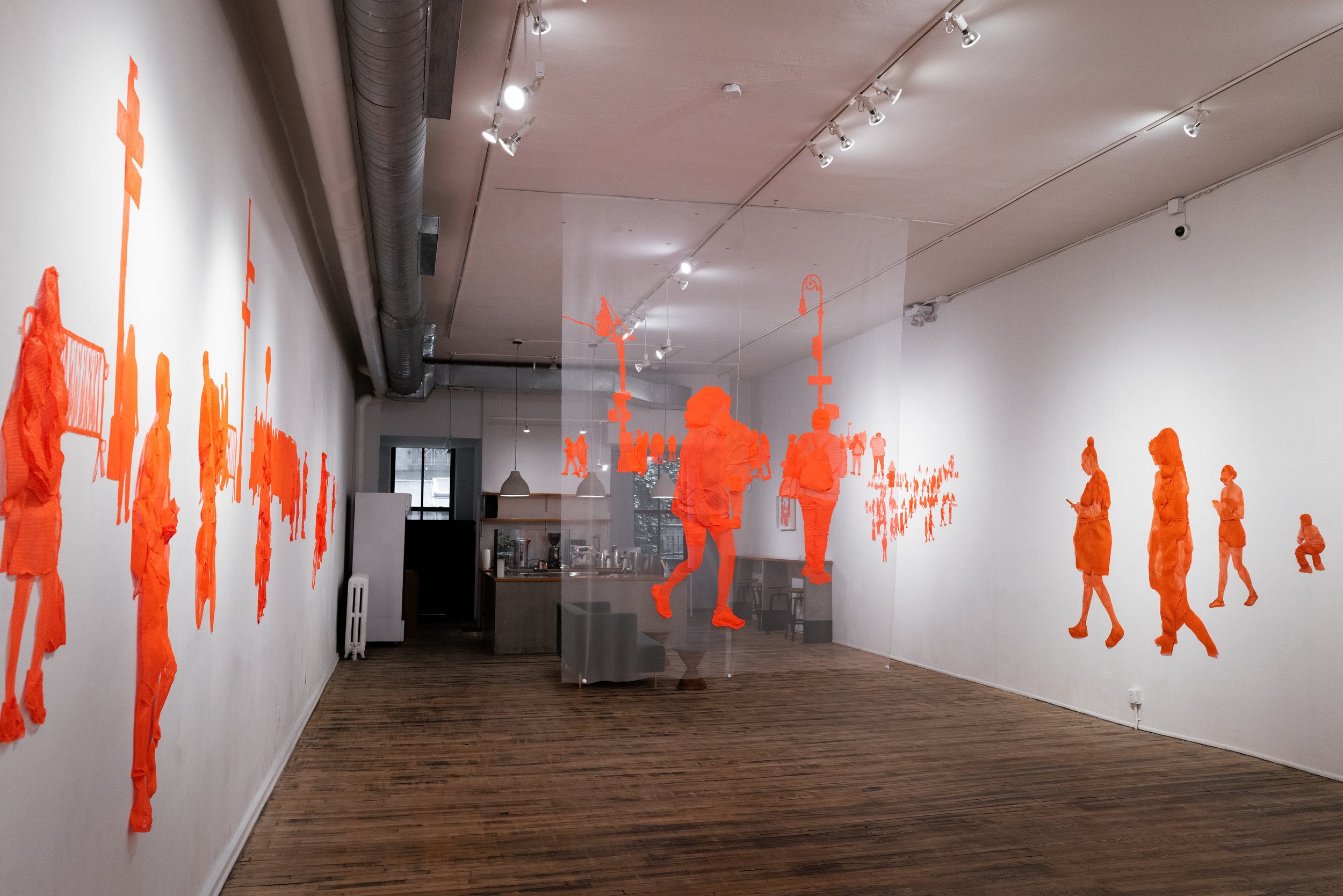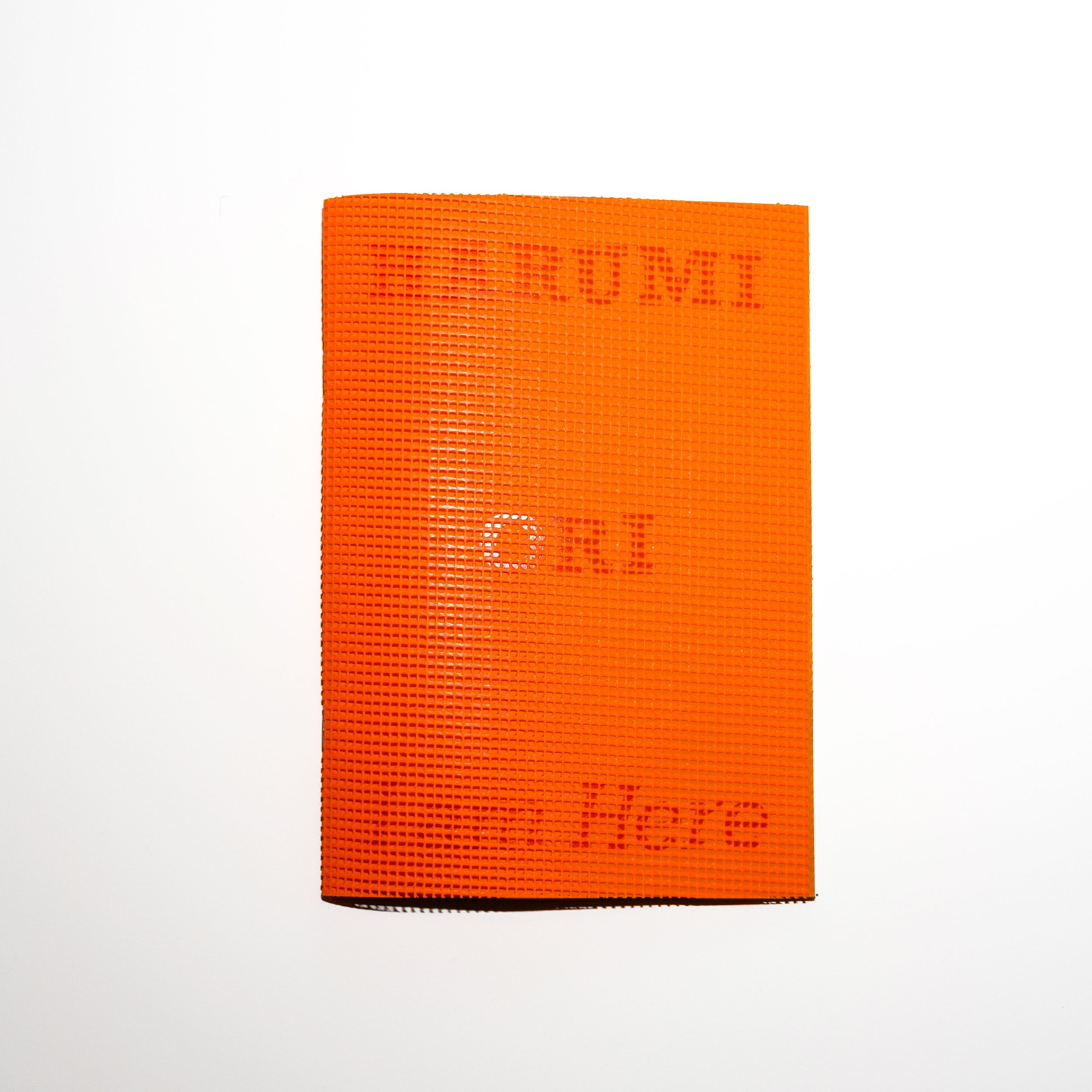TOP | EXHIBITION VIEW | INTERVIEW
HOME > EXHIBITIONS > HARUMI ORI
Harumi Ori
I am Here
September 23rd - October 30th, 2022
Opening Reception:
Friday, September 23rd, 6-8pm
A moment just passed you by. There goes another one, and another. These things may feel ephemeral by virtue of being so small, but moments—those building blocks of time—make up the hours, days, weeks, and years of our lives. There’s nothing more valuable.
For the artist Harumi Ori, each second is sacred. In her work, she freezes everyday moments and makes monuments to them, transforming banality into timelessness. By choosing to focus on one ordinary spot in the world, from the same vantage point day after day, Ori elevates its sense of place with special significance. Then, using the photos she’s taken, Ori sculpturally recreates that spot using industrial mesh, a humble, everyday material that also reminds us of the temporary nature of construction sites.
Temporality has long been a concern for art. Some works, such as the endurance pieces by Vito Acconci or Tehching Hsieh, force us to consider the passage of time. Other works, such as that of On Kawara or Christian Marclay’s The Clock, boldly freeze days, minutes, and seconds, reminding us of both fleetingness and the importance of each little unit of time. This is the lineage Harumi Ori’s work is in.
Ori’s work also often extends beyond the studio or the gallery and exists in the public sphere. Seeing her life-sized orange figures in the wild can be a thrill that offers us a sense of the uncanny and the familiar at once, like a mirror reflecting our humanity back at us. At first glance there might be something whimsical in seeing these sculptures out in the world. But upon closer scrutiny we sense a deeper meaning embedded in them.
This is because there’s also a kind of harmony at play in Ori’s work. By showing us these crowds of everyday people going about their business together and apart, we can be reminded of the dance that occurs between all of us while we’re simply living our lives. All walks of life are represented in Ori’s work, from all strata of society. By rendering everyone in the color orange—a shade which the artist says is holy to her—Ori equalizes her subjects and presents us with a visual representation of the ease with which we might coexist.
EXHIBITION VIEW





I am Here@North 6 and Wythe Street, Brooklyn, Jan 13, 2013
I am Here@Greene St & Spring St, NY, Nov 9, 2021, 3:33pm
INTERVIEW
Existence Itself
— An interview with Harumi Ori
Do you remember when you first read the poem I Am Here by Michio Mado?
I think it was when I was a high school student—16 or 17 years old. I copied the poem out and I always carry it with me.
You've described it as having to do with the idea that ‘being is meaning.’
Existence is meaning. Existence itself is already wonderful and a miracle. In society, we are educated to believe that everything needs a value. But the universe itself doesn't expect that.
How did you come across this industrial mesh you use? It's a very unique material.
It's also beautiful and flexible. It's easy for me to form it and shape it. After 20 years of using it, I’ve learned a lot. When I first got the idea to recreate a space as a sculpture, I tried fabric, paper, metal, and metal mesh—but I didn’t like any of it. And then I went to this big, weird store in Chinatown. They have a lot of industrial material from China.
And that’s where you found your perfect material. Why do you use orange-colored mesh?
At first, I used the same mesh, but in red. I wanted to use red against a white wall. I worked for a few years using the red, but suddenly I felt that it was too heavy. It was then that I switched to orange. In Japan, orange-red is a holy color; Shinto shrines use orange-red for their gates. It reminds me of celebrations in Japan, and in my artwork I celebrate specific spaces and moments. That's why I wanted to use this color.
How many photographs do you take on average before you make a piece?
It's a lot. Like 2000. Because I don't know which one will be the best.
And do you only use one photo for a finished piece, or will you mix photos, like taking the background from one photo with the foreground from another photo?
I use only one picture for a finished sculpture.
Oh, wow. You’re really looking for the perfect photo.
Yeah. Since my concept is that one exact moment is beautiful, I shouldn’t need to change anything about the photograph.
You’ve referred to your work as being hopeful. Can you tell me a little bit about what that means to you?
When I read the poem I Am Here, I feel hope. It says to me, hey, you’re okay. You just exist; it's okay. You don't need to be great. And, also, you don't need to criticize other people.
Do you want to impart any particular sort of mood to the audience for your work?
When the public sees my artwork, I want them to feel a very positive feeling.
There’s something democratic about your work. It creates a sort of new perspective on crowds.
When we are just walking down the street past other people, that is a very special thing. These are people we’ve never met before, but we share the same place. And if I take a picture of somewhere like Union Square, I see a lot of diversity—a diverse group of people sharing the same space. People can do this naturally.
How old were you when you knew you wanted to be an artist?
At college, I majored in graphic design. I didn't want to study fine art at that time, because I believed that it was impossible to make a living as an artist. After school, I worked at an advertising agency as a graphic designer. That was fun, but stressful. I felt that I wanted to do something different. I really wanted to study art. And then I came to the United States, and I went to the School of Visual Arts. I was about 30 years old.
Is there somewhere else in the world where you would really like to make a sculpture?
I’d like to make work in many different places. I’ve been thinking about a project I want to do in the future. I’m going to ask photographers all over the world to take a picture at exactly the same moment, and then I'm going to make those pictures into sculptures.




